The profound equality of all beings is only known in the moment in which ‘I’ no longer exists. Only through the recognition of emptiness is there stainless compassion. This stainless compassion, inseparable from emptiness, is none other than the ultimate samadhi.
—Phakchok Rinpoche, In the Footsteps of Bodhisattvas
An authentic Buddhist master has the ability to precisely identify the unique positive qualities in a student and is able to direct those qualities towards virtuous activity—such that the student, the master, and those connected with both of them are benefited directly and indirectly. The master also has an equally powerful yet devastating ability to reveal the faults of the disciple, such that the student cannot help but face every shred of egotism with which students torture themselves, obscuring the fundamental goodness of their basic nature. In one of the Buddha’s famous teachings entitled the Samādhirāja Sūtra (Samadhi Raja Sutra) or “The King of Meditation,” the Buddha taught that attaining the awakened state—emptiness with a core of compassion—requires us to embrace this process guided by the teacher: to nurture our qualities of goodness such that they overwhelm our faults, and to clearly see the nasty habits of mind so they do not grow in power. Phakchok Rinpoche, Buddhist master and lineage-holder, clearly presents this path of authentic Buddhist training in his new book, In the Footsteps of Bodhisattvas.
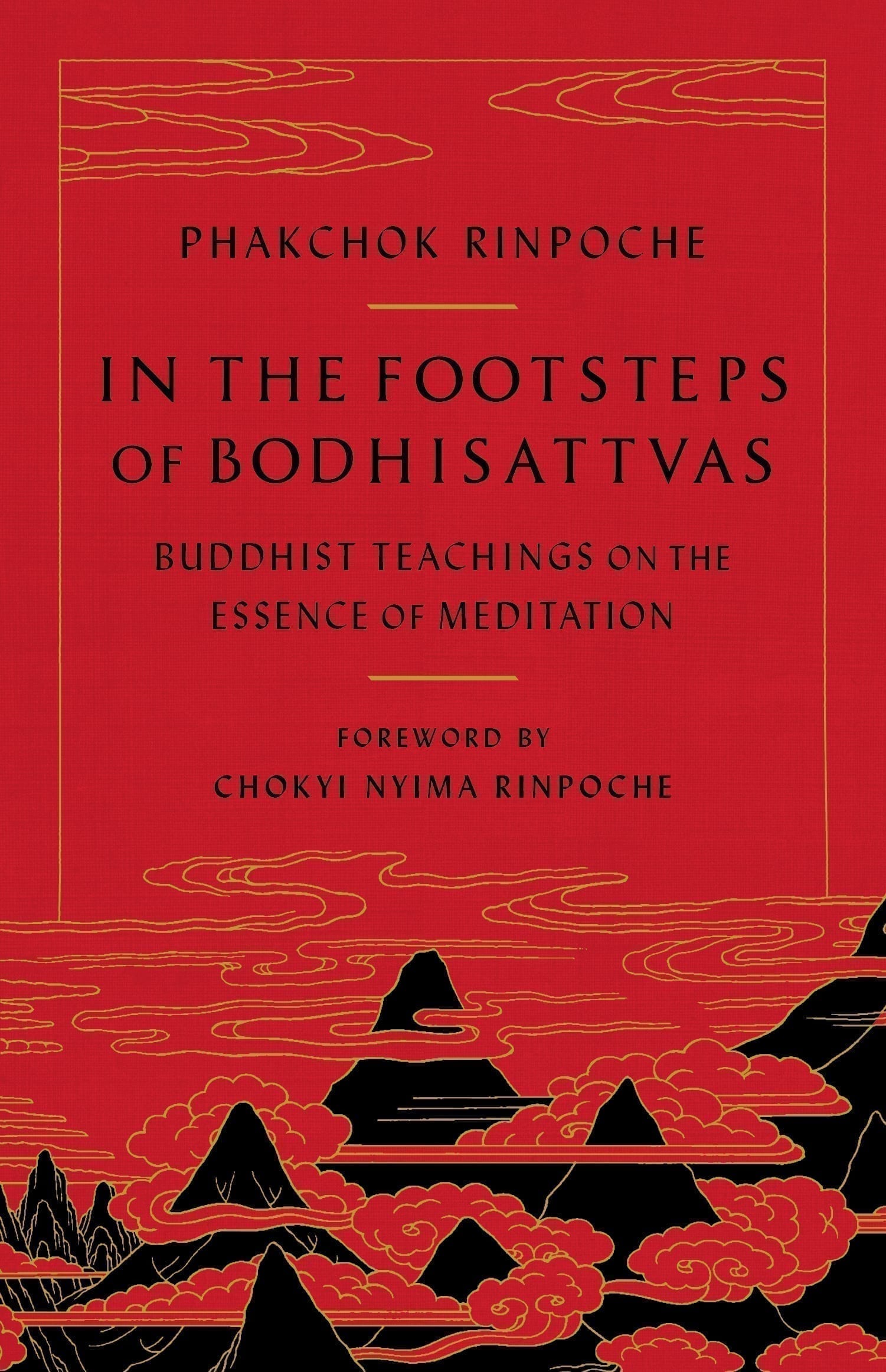
This process of purification can be long and gentle or short and intense, but according to all of the great Buddhist masters of the past—those incredible beings with whom you can spend ten years and never witness a moment of selfishness—it’s got to happen. If we want to be open, blissful, clear and intelligent, and if we want to enact effortless compassionate activity, we have to go through the process of assembling the conditions of disciplined conduct and virtuous action. Through skillfully comporting our minds, we can gather the potent spiritual force of merit, develop powerfully altruistic mental states, and gain the support of awakened beings. Through the application of the profound meditation instructions of the Buddha and other highly accomplished adepts, we can give rise to the experience of an unceasing domain in which we are never separate from intelligent love, wisdom, and bliss. It is not wishful thinking or religious piety— it is simply true that this can be done. Phakchok Rinpoche summarizes the result of this path, the highest form of meditation, in this way:
This ultimate samadhi or meditation taught by the Buddha on Vulture Peak is not a state of being absorbed. It is not cultivated, not a type of mental film that we superimpose over everything in our lives. It is unfabricated—the recognition of the true nature of reality. It is the vividness of our mind’s empty nature that lacks any permanent identity, that is simply pure awareness.
What needs to be Purified
In the Footsteps of Bodhisattvas was written over the past five years on the basis of many teachings Phakchok Rinpoche generously gave on the topic of the Samadhi Raja Sutra, a detailed and utterly profound manual on how to become a Buddha. I’ve been asked to share with everyone a little bit about my experience helping Phakchok Rinpoche compose this book—to talk a little bit about the process of working on the book, as well as its teachings and contents. The intention of this book, as with any Buddhist instruction, is simply to deliver us from the painful cycle of continuously entering into hope and fear and being caught on the various hooks of rage and aggression, proud self-satisfaction, unabating hankering, jealous frustration, and the paralysis of not knowing the actual state of things or what to do with our tremulous lives. These poisons continuously arise, and in their gross forms obscure our ability to experience the fundamental goodness that is the actual ground of our experience. Traditionally, we categorize what needs to be purified as the two obscurations: the afflictive obscurations and the cognitive obscurations.
I imagine I’m a suitable candidate to offer some words on this topic because I’m riddled with these painful faults myself; and like many of my fellow students I have had the fortune for these faults to be kindly exposed by Rinpoche and my other precious teachers, again and again. One of the most difficult of these obstacles to genuine meditation is the stickiness of pride—thinking that you know it all already, are unique, have something that others don’t, or are extra worthy of anything at all. As it is often said in the Buddhist teachings, if we are full of pride then we are like an iron ball to which the water of good qualities cannot cling—they just slide right off. We can’t hear what people are saying or absorb the helpful words that might reveal to us ways of being that are so much more at ease, lucid, and kind. In the process of assisting Rinpoche with this book, I have had the chance to see the utter stupidity of my own pride again and again, so I’d first like to comment on this particular form of negativity.
The Illusion of “I am”
The Abhidharma says that the thought “I am” is pride. As we know, this is an unbelievably sticky obscuration to remove, the stickiest of all, and is essentially the only thing blocking us from experiencing unending great bliss and enacting selfless awakened activity on behalf of others. If we contemplate the fact that an inconceivably powerful good is obscured by such a simple but pervasive conceit, it is actually revolting. This is especially the case if we have studied the Dharma, understand that all phenomena are impermanent, know that we cannot identify anything stable within our bodies or minds that is truly “me,” and yet still remain selfishly reactive, socially paranoid, and dismayed when we don’t get what we want or angered when we encounter situations we are trying to avoid.
The persistent quality of the conceit “I am” confirms what Phakchok Rinpoche has shared in teachings public and private: “It doesn’t really matter how much Dharma you know; it matters how much you apply.” In other words, you won’t discard the pain caused by the desperate “I am” with keen thoughts, nor blast it away with forceful focus. It is possible to have good dharmic understanding and still berate everyone around you, or treat the waiter as if they aren’t human, or hide behind your identity as a practitioner and not see the very ordinary way in which your sense of “I am” and the anger connected with it is causing you and others harm. We can read profound books and think we are something special, and still be very mean. We have to be very careful and very aware, especially if we are claiming to be practitioners, of how our conduct is representing the Dharma and our teachers to others. If you scream at someone and they know you are a Dharma practitioner, that person may begin to think, “Maybe there is nothing at all to this Buddhism thing. It doesn’t seem to be working with this person.” In that moment, there is the possibility for great harm. Unfortunately, we’ve all been there.
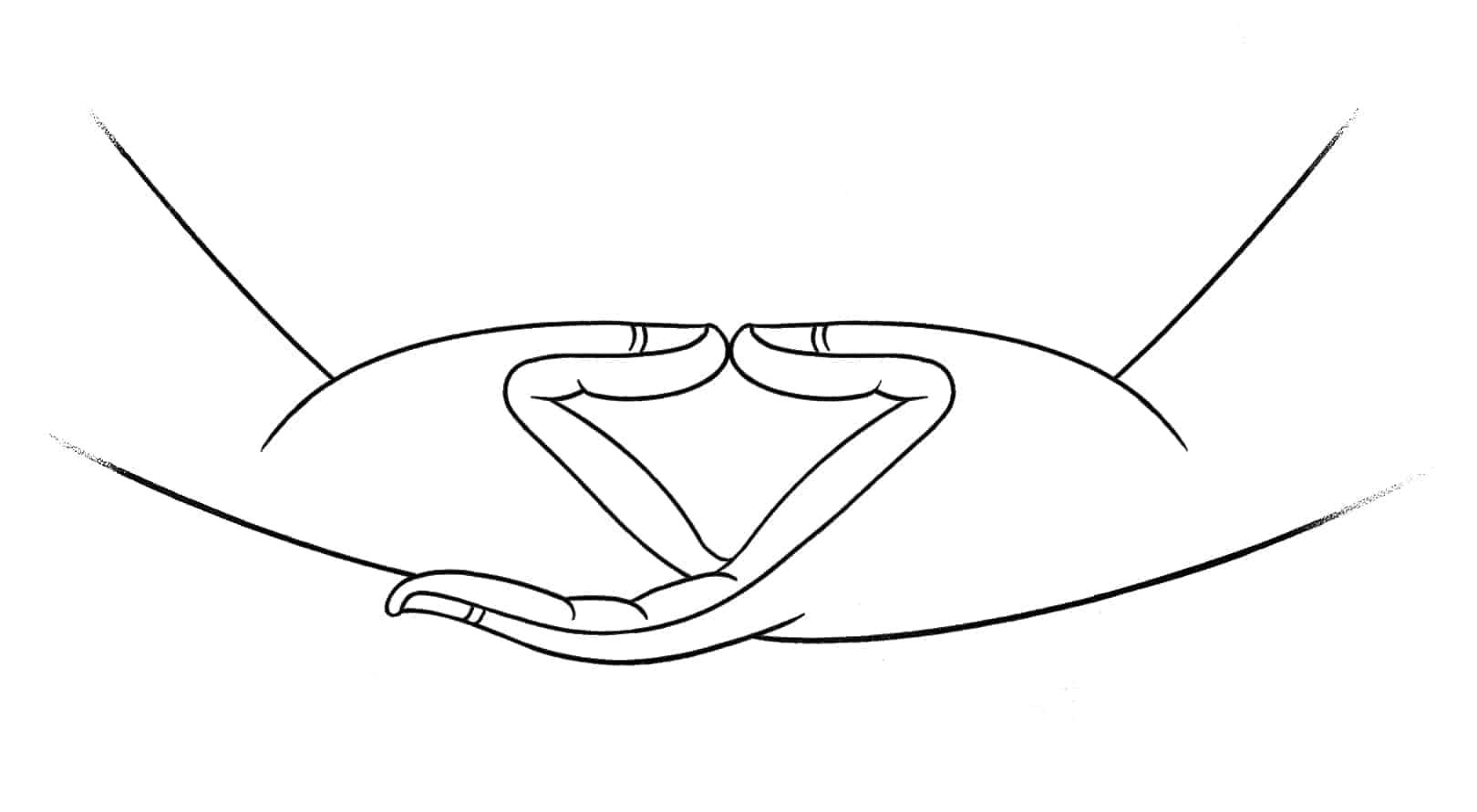
The Constellation of Faults
Therefore, we need to understand the constellation of faults associated with our fundamental pride, and then apply ourselves to experiencing genuine revulsion motivated by the application of Dharma practice. Through this, we can renounce the project of reifying “I am.” When we are finally saddened by the recognition that the power of deep habitual clinging to a non-existent self generates every evil on the planet, we can then begin to practice sincerely. From this place of sadness, we are able to approach true compassion and its indivisibility with emptiness, gain total freedom, and become a force of unerring benefit for everyone around us. To summarize Phakchok Rinpoche’s opening quote above—it is only in the absence of “I” that we actually encounter ultimately pure meditation. Anything else involves at least some formation of conceit.
As a student sharing some thoughts with other students who also have not totally cast off the subtle thought “I am,” together we can heed the Buddha’s imperative to examine the afflictive mental states that characterize our situation as deluded beings. We get to hang out together on this disturbing but incredibly rich field of “conceit,” with the intention to go beyond it. It is here, through the guidance of the Buddha, the great masters of the past, and our personal teacher, that we can make a good start on our way to unifying with the compassion and wisdom that constitute the genuine meditation of remaining within the fundamental nature of mind.
Lightly Jumping into the Muck
Therefore, I suggest that we remain light, but vividly uncompromising about the state of our moment-by-moment experience of selfishness, and jump right into the muck of our own habits. There is a certain dignity in seeing your faults and saying, “I do see the way I am harming myself and others, and I am sorry.” Doing this is so much stronger and beneficial than indulging the cowardice of not wanting to feel exposed. I have noticed, anyway, that most of the time our faults are not as hidden to others as we imagine them to be. In a sense, we are already exposed. So, sometimes acknowledging our faults to our friends and families, can be incredibly dignified and healing for us and our circle of loved ones.
In the process of working on this book, like many students, I have given my teacher more than enough opportunity to cast me into the muck of my faults again and again, which is actually incredibly kind. Behind each self-centered veil is more openness, more love, more bliss. To get to that bliss, the Buddha teaches us to watch out for some primary negative actions.
As a rough guide, here are the main faults to be aware of: faults of the body—stealing stuff, murdering any creature, and sexual misconduct. The subtler faults of speech: yelling at people, dividing perfectly good relationships through negative speech, telling bold-faced lies, and, our favorite, relishing in idle gossip. Then, the faults of the mind: harboring malice, hankering after things that aren’t ours, and generally having an incorrect view of reality. According to the Buddha, the stains of all of these actions show up when we sit down to meditate; and when we guard against these actions in post-meditation, we are far less disturbed. Then, we begin to encounter more fully the glimmers of our fundamental goodness.

Nurturing the Glimmers of Goodness
Buddhist teaching encourages us to nurture these positive glimmers—which are often characterized by a sense of tenderness, warmth, openness, or an urge toward loving action on behalf of others. They are also accompanied by a feeling of “reality” in the sense that we have been relieved from the weight of harboring the negative emotions and can lucidly discern the subtleties of our social environment. Even though these glimmers of goodness still arise on the basis of a subtle sense of “they are,” and “I am,” these altruistic attitudes of mind are deeply supportive and healing. They help us ultimately calibrate towards the king of samadhi, which is free from conceit altogether—a state that is actually nonconceptual and therefore beyond the mental formations which constitute the limited “mind.”
The positive mental states to be nourished are called the Four Immeasurables, and are the boundless mental attitudes of Love, Compassion, Joy, and Equanimity. Instructions on how to train in these states are available within In the Footsteps of Bodhisattvas. When these attitudes are embraced with the wish to establish every single being without exception in the awakened state of unending bliss and freedom, every friend, enemy, cockroach, and snake, then we call this “the bodhicitta of aspiration.” Since many of us Dharma students have some experience in cultivating the Four Immeasurables, rather than get into a detailed explanation, I’d like to share a brief story:
Once, in late summer, Phakchok Rinpoche was teaching on the Samadhi Raja Sutra to a group of students. During a teaching break, in between a sip of tea, Rinpoche looked up at me and asked, “What do you think the Buddha was practicing beneath the Bodhi Tree before he gained awakening?” I was struck by the question—I had once heard that Siddhartha Gautama’s shamatha, or calm-abiding meditation, was so powerful that as soon as he discerned the correct view of reality, the force of his previous years of training carried him into awakening instantly. Therefore, he wasn’t practicing extended moments of vipashyana, or the special insight that discerns reality; and if he was only practicing shamatha, he would have remained absorbed forever beneath the tree. Rinpoche, seeing my inability to produce an answer, responded: “Loving-kindness.” Rinpoche said, “Loving-kindness is the practice that transforms arrows into flower blossoms.”
This was such a powerful teaching for me, because it not only revealed the benefits of loving-kindness on the immediate level—that obstacles and aggressors become adornments to our training—but further, that through the radiance of loving-kindness and the subsequent practices of the three other Immeasurables, the reality of the free and empty essence of mind becomes clear. Some of us may have read these lines from the Third Karmapa, Rangjung Dorje’s Aspiration of Mahamudra:
Although the nature of beings is always buddha, not realizing it they wander in endless samsara.
May unbearable compassion arise in us for all beings who endlessly suffer.
The expression of unbearable compassion is unceasing. Within that love, its empty nature arises nakedly.
May we cultivate this unified, faultless, and supreme path continuously, day and night.
The Actions of a Bodhisattva
Since the body and speech are the servants of the mind, aspirational bodhicitta strengthens and empowers our actions to help others. These virtuous actions are called the “bodhicitta of application,” and are often enumerated as 1) generosity, 2) discipline, 3) patience, 4) diligence, 5) meditative concentration, and 6) the non-conceptual wisdom which comes to embrace them all. In the Footsteps of Bodhisattvas teaches how these practices, when unified with virtuous mental attitudes, support our capacity for realizing the state in which nothing is separate. When the five initial virtuous actions are embraced by the sixth, non-conceptual wisdom, all of them become paramitas, or perfections. Rinpoche describes this in the statement below:
“With transcendent wisdom, you know how to give generously but without attachment in the process of giving. You are never separate from discipline, but you neither accept nor reject. You have unceasing patience, but you do not cling to sentient beings. You have powerful motivation to practice, but your body and mind never grasp at a self-centered outcome. You maintain the practice of meditation, but you don’t maintain the concept of meditation.”

The Force of Merit
In this way, we accumulate tremendous merit—a concept that remains nebulous for many Westerners, or is sometimes loosely understood as a sort of invisible, possibly made-up, spiritual currency. I think it’s best if we read Phakchok Rinpoche’s teachings on merit in this book to understand more, but suffice it to say it is not woo-woo, abstract, or wishful thinking. The accumulation of virtuous deeds by a practitioner, amplified by the application of altruistic mind states, produces an obvious force and power within a practitioner to accomplish the benefit of self and other. I can acknowledge that as a former scientific materialist, this explanation would previously have been conceptually unsatisfying to me. I am therefore deeply grateful to my teachers for breaking apart that particular conditioned conceit and revealing that the world is a rich field to be mined for spiritual potency in each moment, that the process of accumulating merit is nourishing and boundless, and that the application of merit towards awakening is as real as any other illusory physical laws governing the environment in which we find ourselves. Through merit we more easily accomplish our aims and create fortunate circumstances, and through merit we more swiftly dispel our faults and obscurations.
Bringing it Home
Now, this next section is for those who want to understand how Phakchok Rinpoche’s teachings on the Samadhi Raja Sutra might fit into their long-time personal practice. If we are familiar with Vajrayana Buddhist practice, we know the special view of its teaching is that, apart from the obscuring stains of our faults, and in particular the cognitive obscuration of the subtle formation “I am,” the very nature of everything is already awakened and utterly perfect. Although the Samadhi Raja Sutra is a Mahayana teaching and is often read as a support for the practice of the Causal Vehicle, there is a reason why it is considered the most important sutra within the Mahamudra tradition, which “takes the result as the path.”
In that light, the teachings given here by Phakchok Rinpoche can be practiced by those who are proceeding step-by-step towards the first bhumi through the vast accumulations of merit and wisdom. It is also for those who have glimpsed the natural state of unified emptiness and compassion through the blessings and instruction of a genuine master and are now in the process of gaining experience and stabilizing that recognition. Practicing the Four Immeasurables, engaging in the Six Paramitas, accumulating boundless merit, and applying the special methods of visualizing Shakyamuni Buddha will encourage the fleeting experience of the natural state to stabilize, deepen, open, and pervade. In this sense, the instructions in this sutra work for both types of practitioners. In one section of the book, Rinpoche offers this instruction:
The real samadhi is the empty nature of your mind, which is always present. Recall that all of the buddhas are not separate from the empty nature, and therefore they are not separate from you. When you continuously remind yourself of this, samadhi increases until realization.
This can be done in a conceptual or non-conceptual way; but in either case, it will move you closer towards experiencing the ultimate samadhi, or it will help stabilize your momentary experiences of samadhi until, as it is often said in the Mahamudra context, “experience overflows into realization.
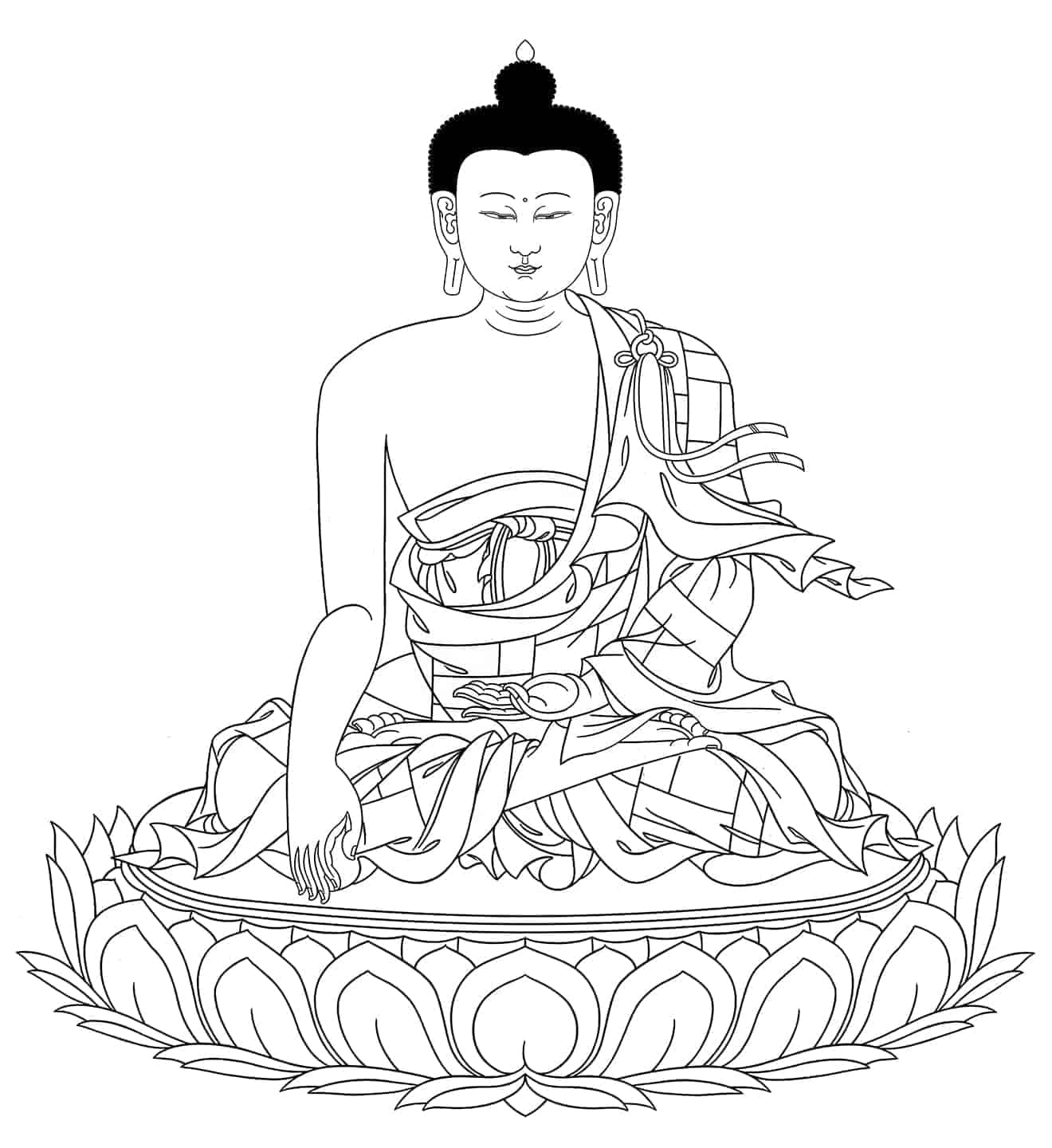
Opening the Windows to Non-Conceptual Wakefulness
In relation with his teaching above, I would like to say that Rinpoche also urges us to connect with the fields of merit and wisdom surrounding the Buddhas and the great masters of the past. We can allow their qualities to suffuse our own minds, such that genuine meditation comes effortlessly. This is brought about via the force of supplication, which is like opening a window in the mind so that the blessings and love of the Buddhas flow into us. If we are taking non-conceptual wakefulness seriously, the implication being that none of us are separate from the Buddhas and Bodhisattvas, then we are doing ourselves and all beings a disservice if we are not employing the power of devotion. Since we humans have the capacity to generate the powerful experience of devotion within our minds, and since any powerful phenomenon can and must be implemented to deepen our experience of the natural state, then we really should cultivate that experience as an indispensable method for awakening. As Rinpoche sometimes says, “Recalling the qualities of the Lama deepens our faith. Recalling the kindness of the Lama deepens our devotion.” Again, I think it’s best to read Rinpoche’s words on this, but it would not be right to omit acknowledging that devotion to the Buddhas, lineage masters, and our personal teacher is the supreme method for quickly attaining the realization of the ultimate samadhi.
In addition to providing quotes from the Buddha as confidence-inspiring support for the practice of the Vajrayana, Rinpoche also provides specific meditation methods which take the visualization of Shakyamuni Buddha as the object of focus. Through truly profound instruction, Rinpoche guides us into the experience of non-conceptual wakefulness on the basis of Shakyamuni Buddha’s words and the visualization of Shakyamuni Buddha’s form. We can therefore see the precedent for the tantric Development and Completion stage practices within the sutric teachings of Shakyamuni Buddha.
Altogether, Rinpoche has provided a manual for practice that can be adopted by any type of practitioner. With humor, profundity, and directness we are taught how to nurture our good qualities, face our faults, and apply the methods of a thousand-year-old tradition, in order to give rise to the “King of Meditations,” which is really too precious for me to say much more about. If anyone has found reading about this process or reading Phakchok Rinpoche’s instructions to be interesting, or feels a glimmer of intention to learn more, or thinks that these instructions have the power to enhance their already long-term practice, I sincerely request that you engage with Rinpoche’s commentary on the Buddha’s words—In the Footsteps of Bodhisattvas. Personally, I feel grateful to share some thoughts about this topic with my fellow students.
In the Footsteps of Bodhisattvas is available in bookstores and from Amazon and Shambhala. Free shipping is available on international orders via Book Depository.
For a preview of the book, including a foreword by Kyabjé Chökyi Nyima Rinpoché, click here.
About Jack deTar
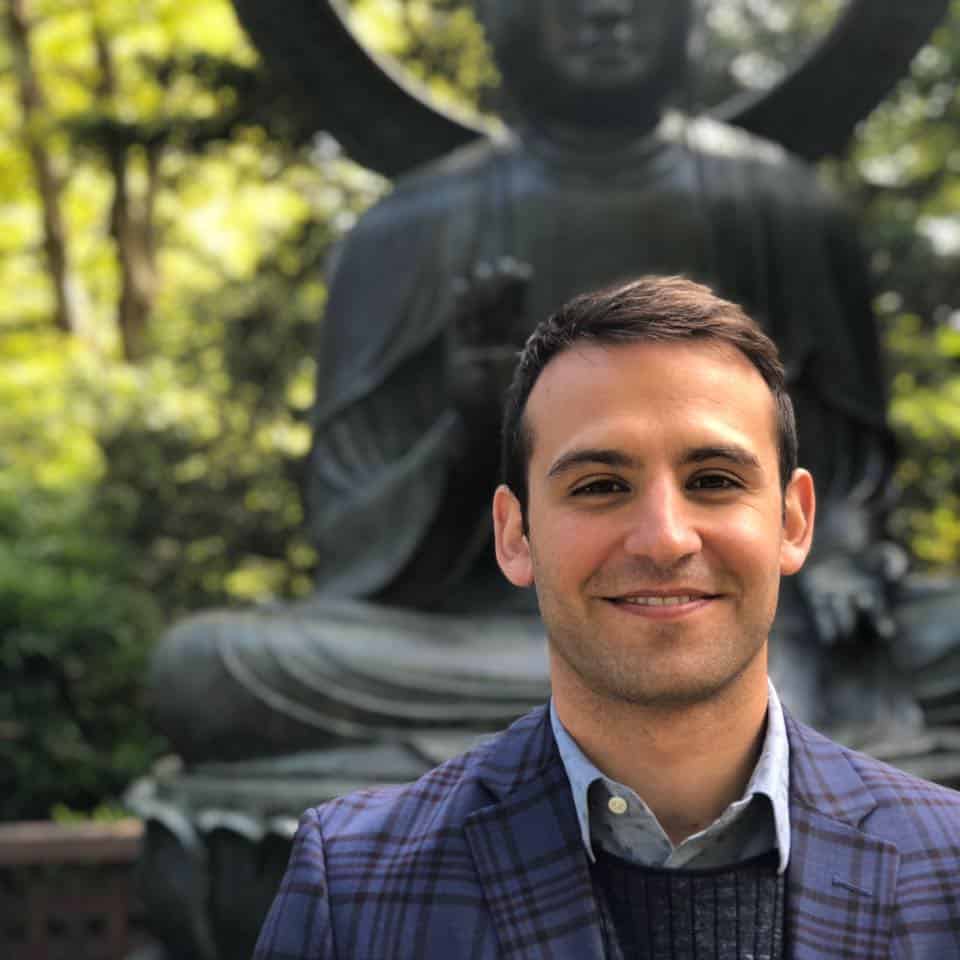
Jack deTar trains under the guidance of Chokyi Nyima Rinpoche and Phakchok Rinpoche. He tries to serve others, hold in devotion those who have realized the Buddha’s teachings, and become familiar with the mind “as it is.” In that light, Jack wishes to help connect students and practitioners with authentic teachers and provide support for anyone who wants to genuinely study, reflect, and meditate. Jack currently serves as the Shedrub Mandala Coordinator for Chokyi Nyima Rinpoche’s centers and activities, and as the Executive Director of Rangjung Yeshe Gomde California, a Buddhist retreat center nestled in the forested mountains of Northern California’s Mendocino County.


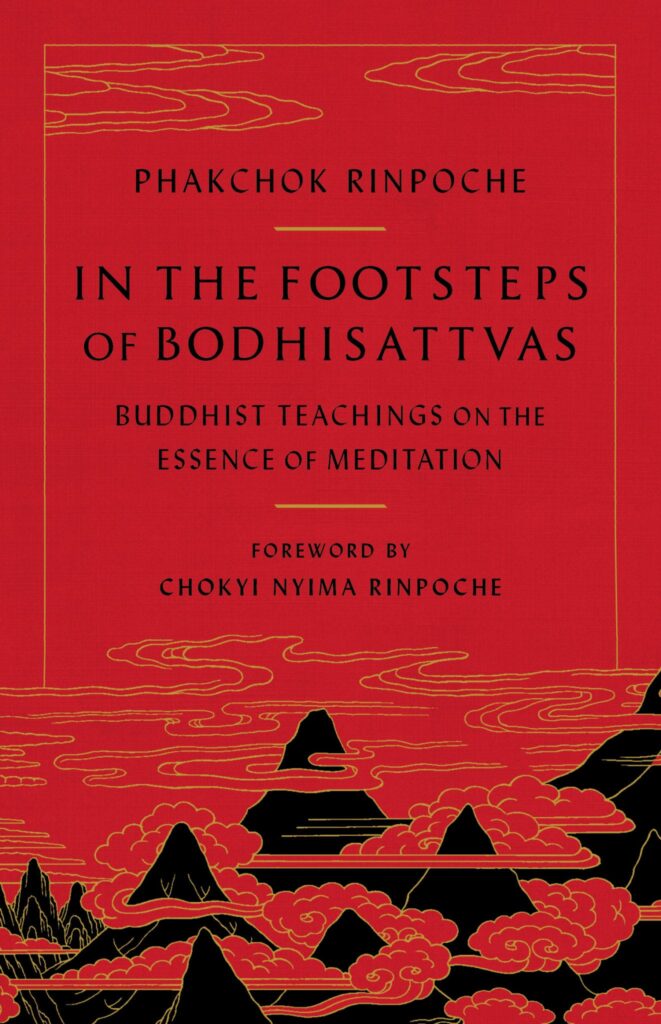

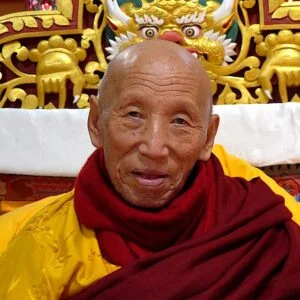





Responses
Jack, In Chapter 12 of “Footsteps” it says, If we maintain the realization of the empty nature, we maintain all of the powers and qualities of the Buddha. Buddha-fields, which are inseparable from the mind’s nature, unfold wherever there is a buddha. If we maintain this realization, pure compassion radiates outward to all sentient beings.
Rinpoche, Phakchok. In the Footsteps of Bodhisattvas (p. 157). Shambhala. Kindle Edition.
Why is the last buddha not capitalized?
Hello Barry,
The word buddha can function as both a common noun and a proper noun.
When “buddha” is used to refer to multiple awakened beings or an awakened being in a general sense, it functions as a common noun. For example: “Throughout history, many buddhas have taught the path to enlightenment.” Or: “The temple is adorned with a statue of a buddha.”
When “Buddha” is used as part of a specific title or name, it functions as a proper noun. For example: “The Buddha taught the Four Noble Truths.” Or: “We follow the teachings of the Buddha.”
In these cases, “Buddha” is capitalized and refers to a specific historical figure or title, such as Siddhartha Gautama.